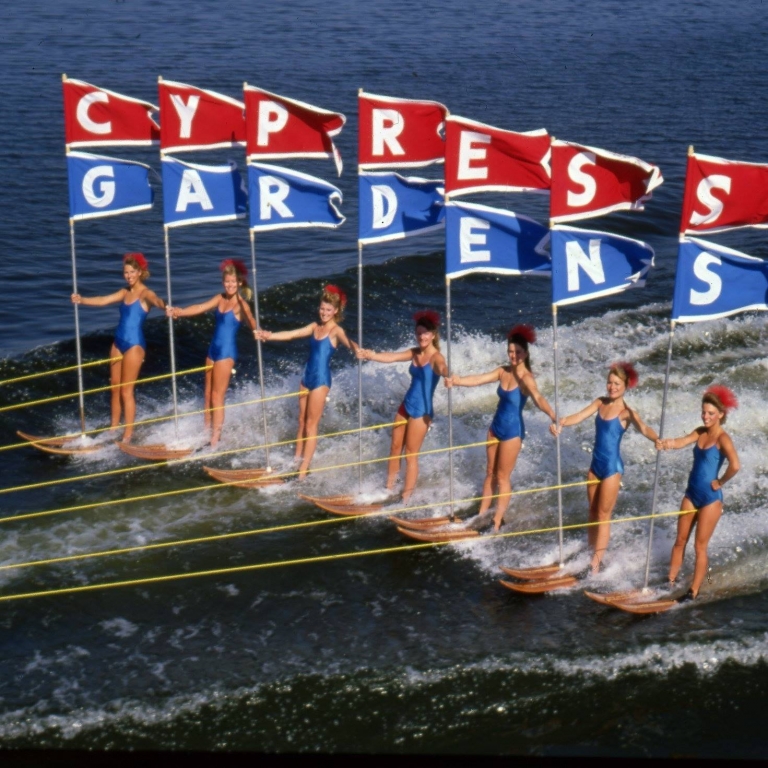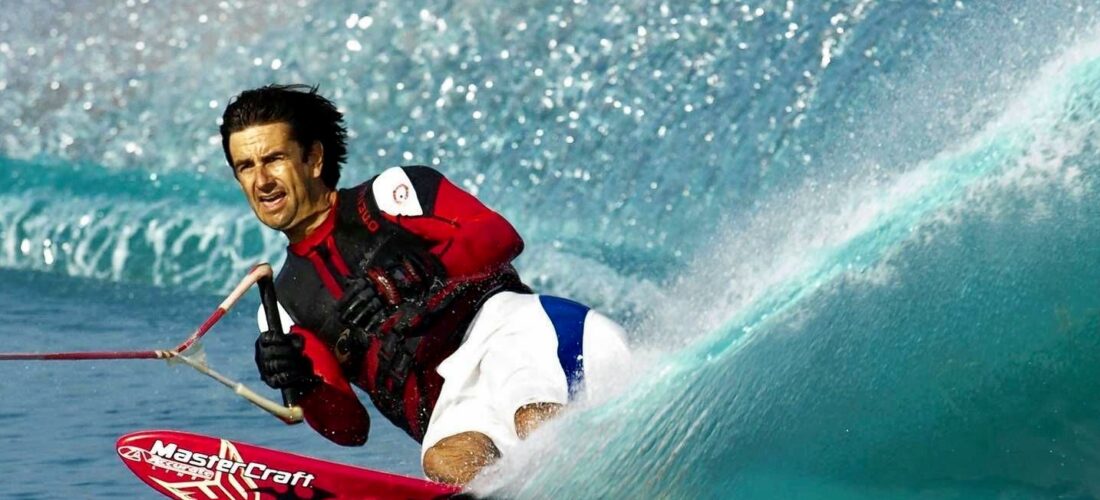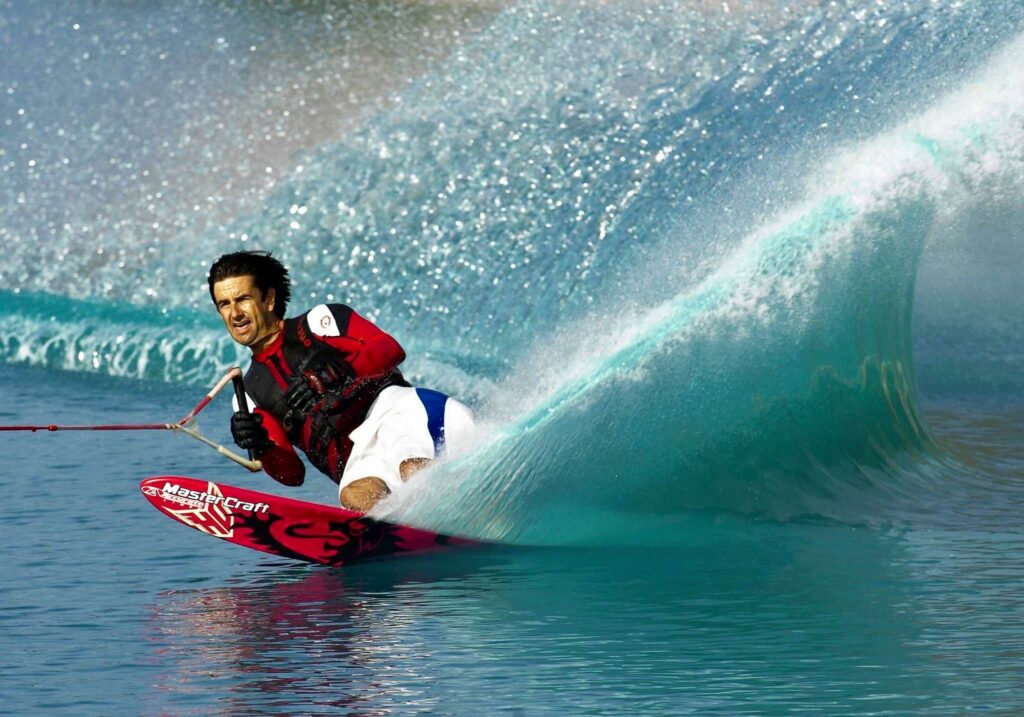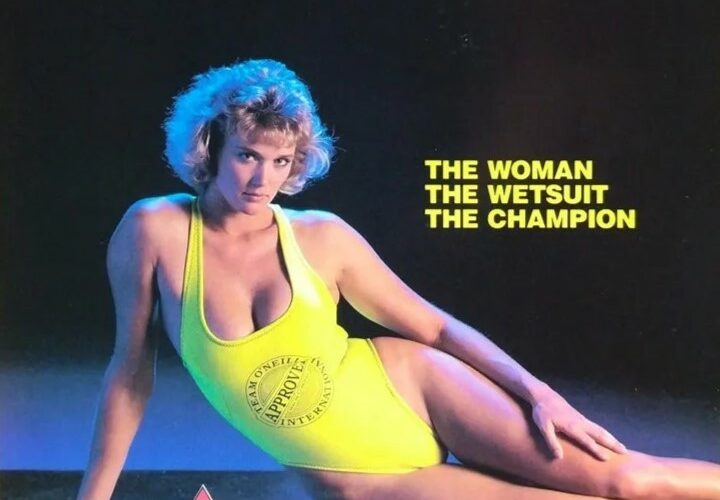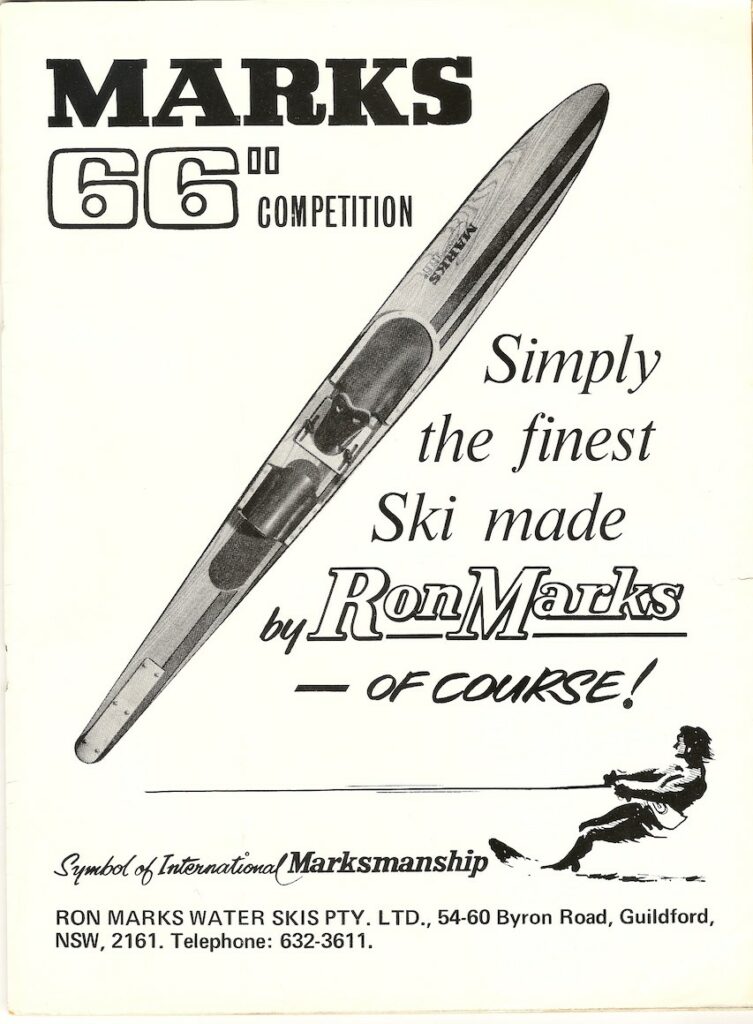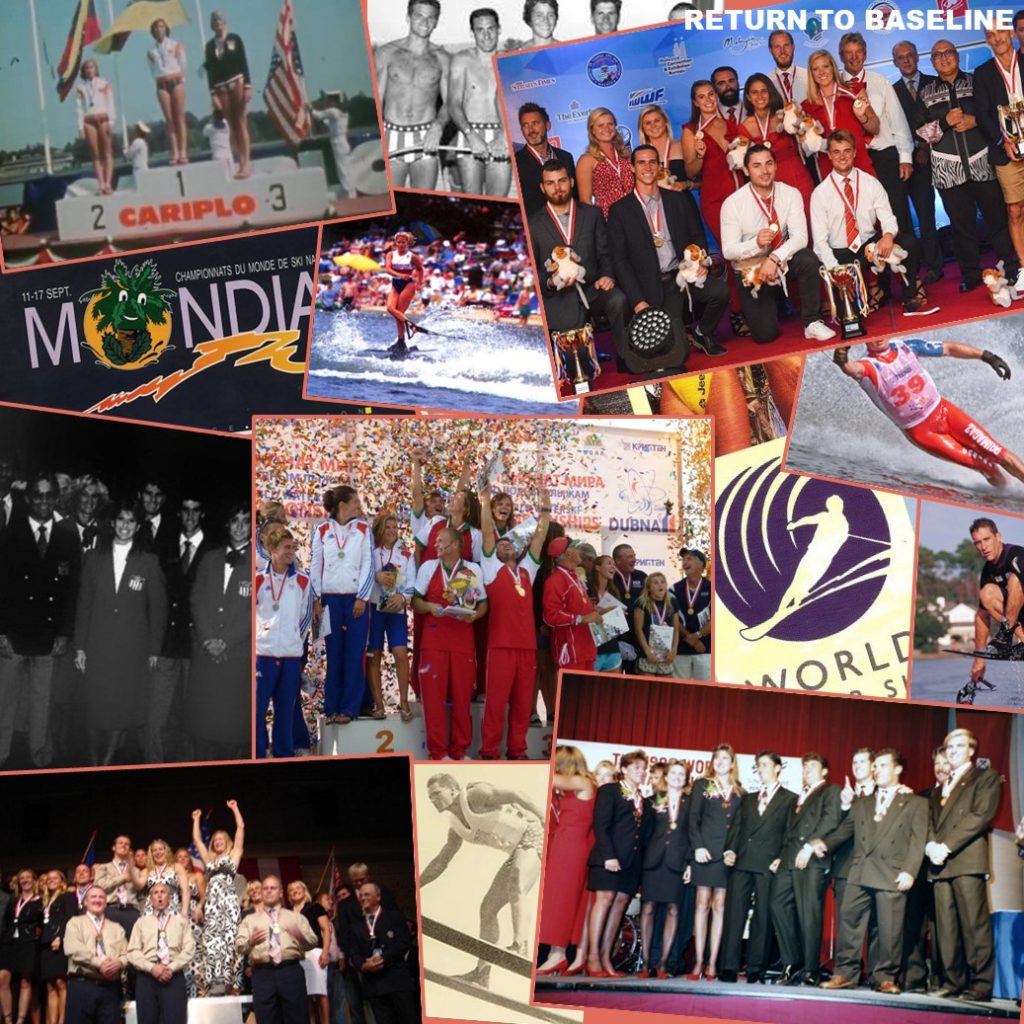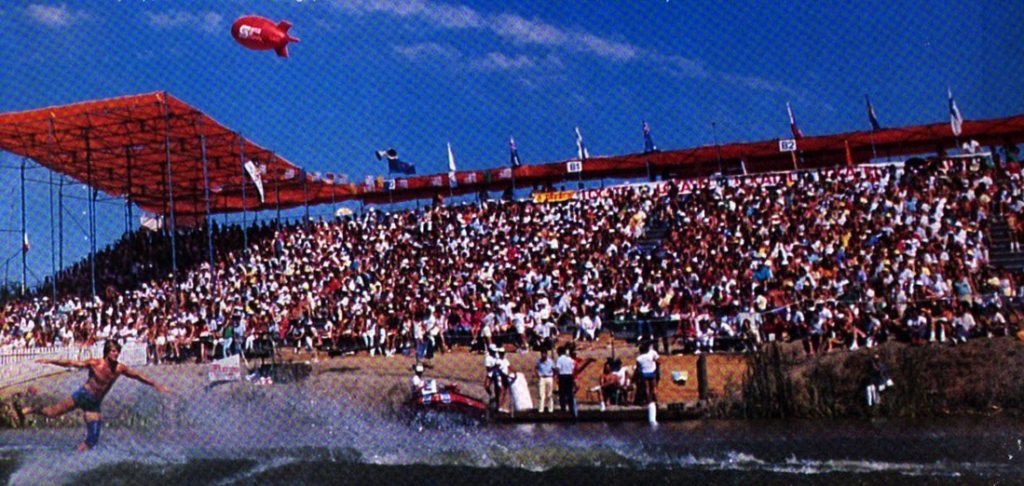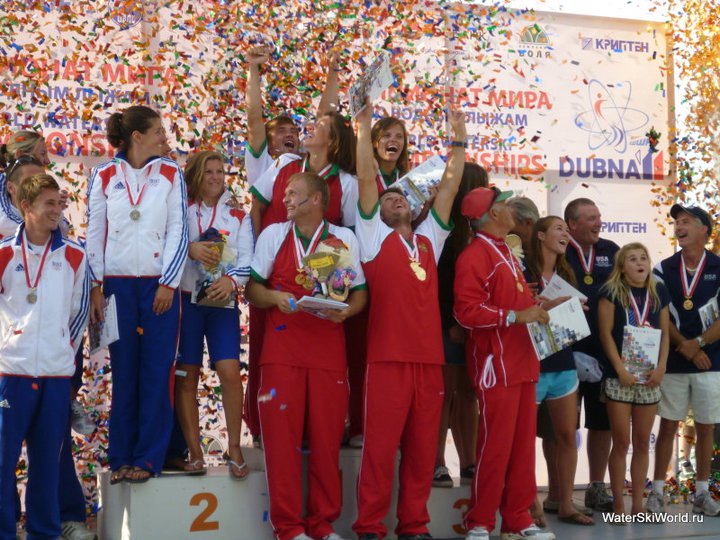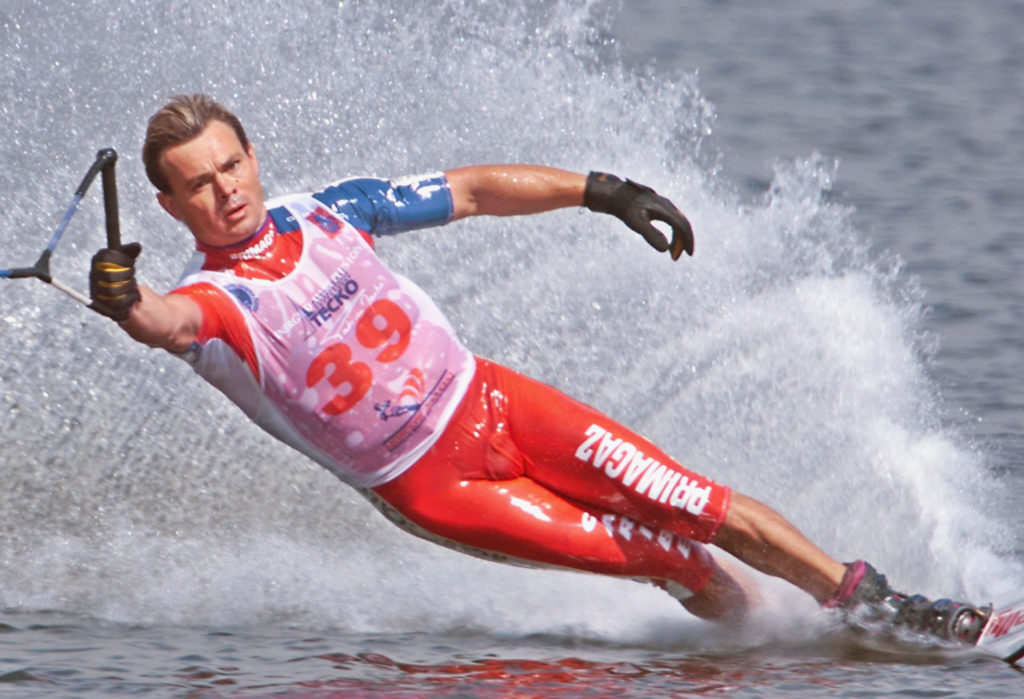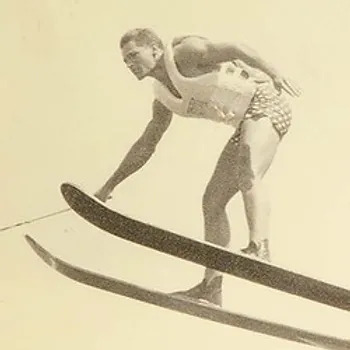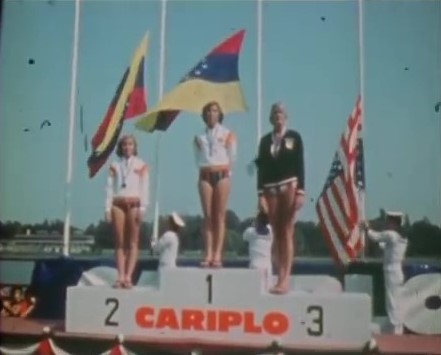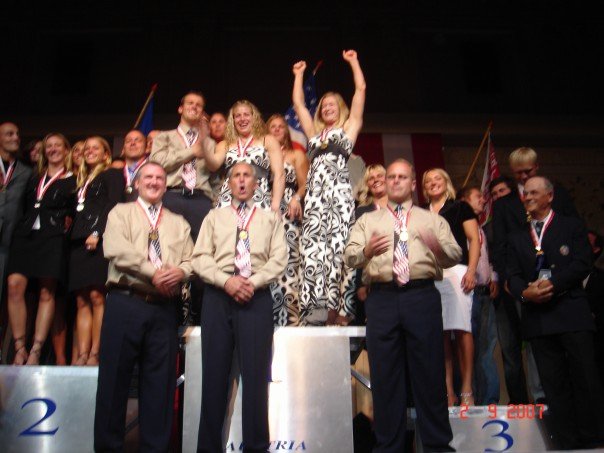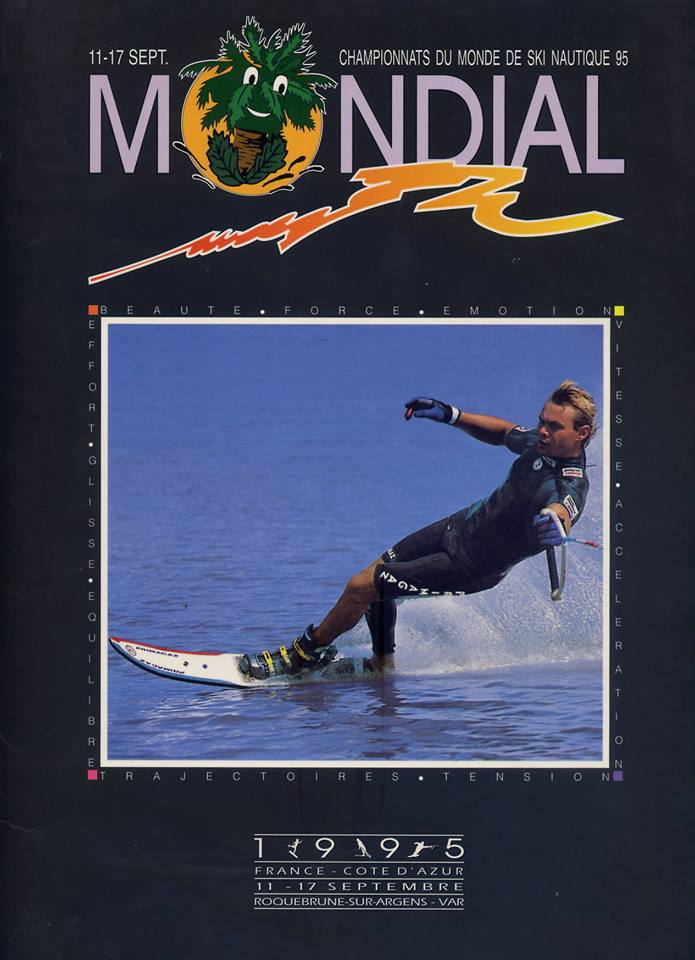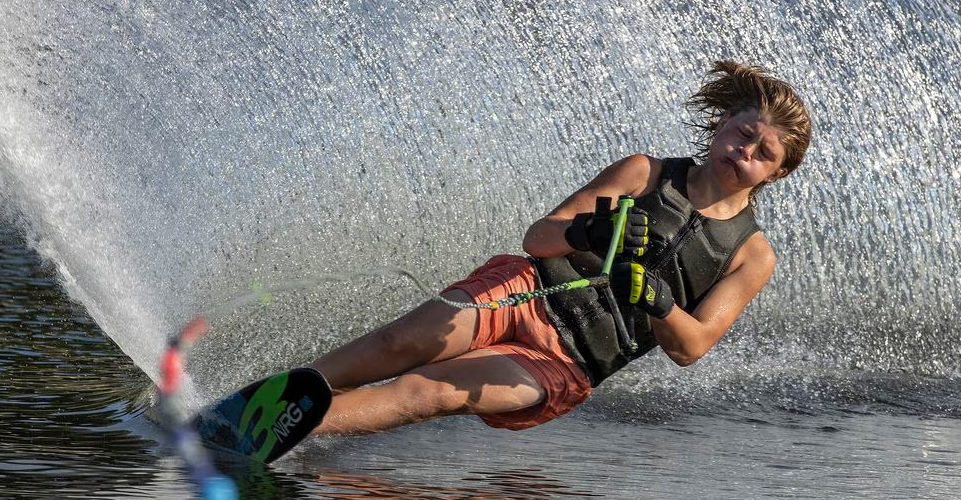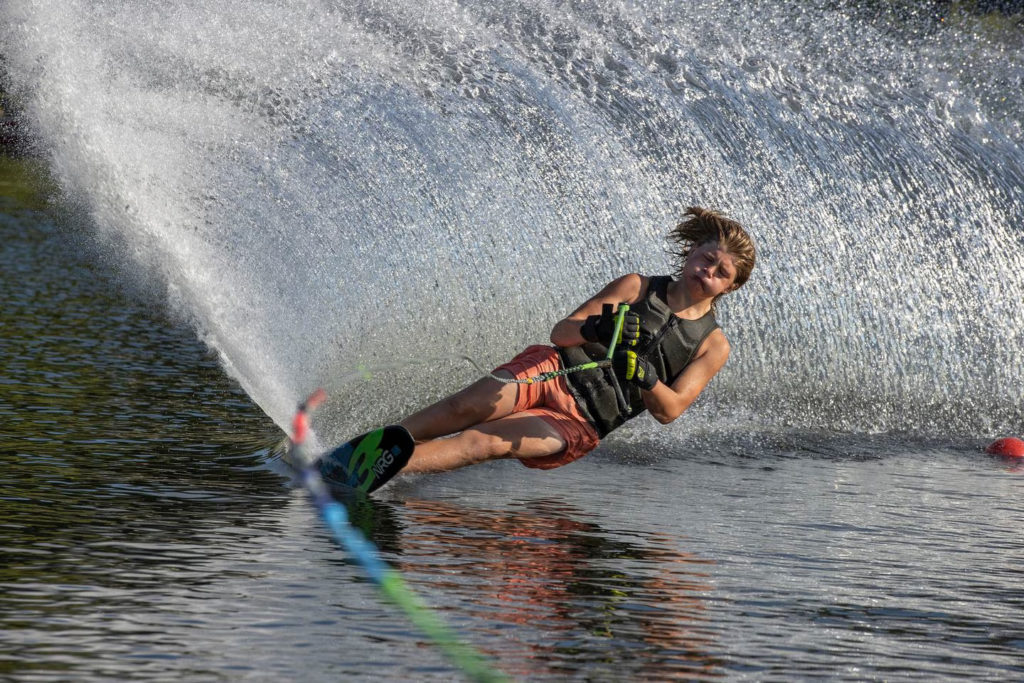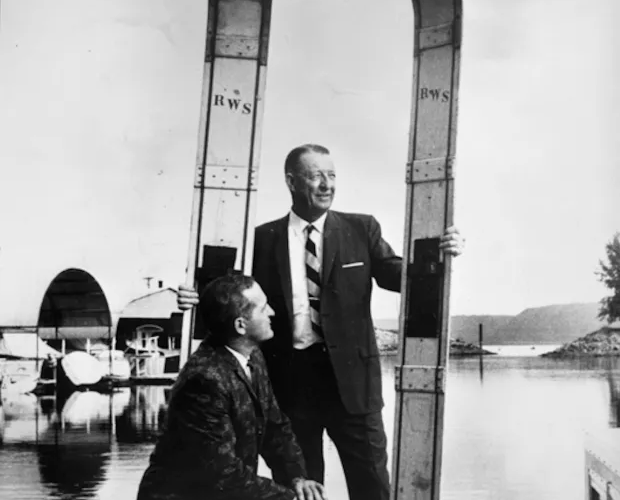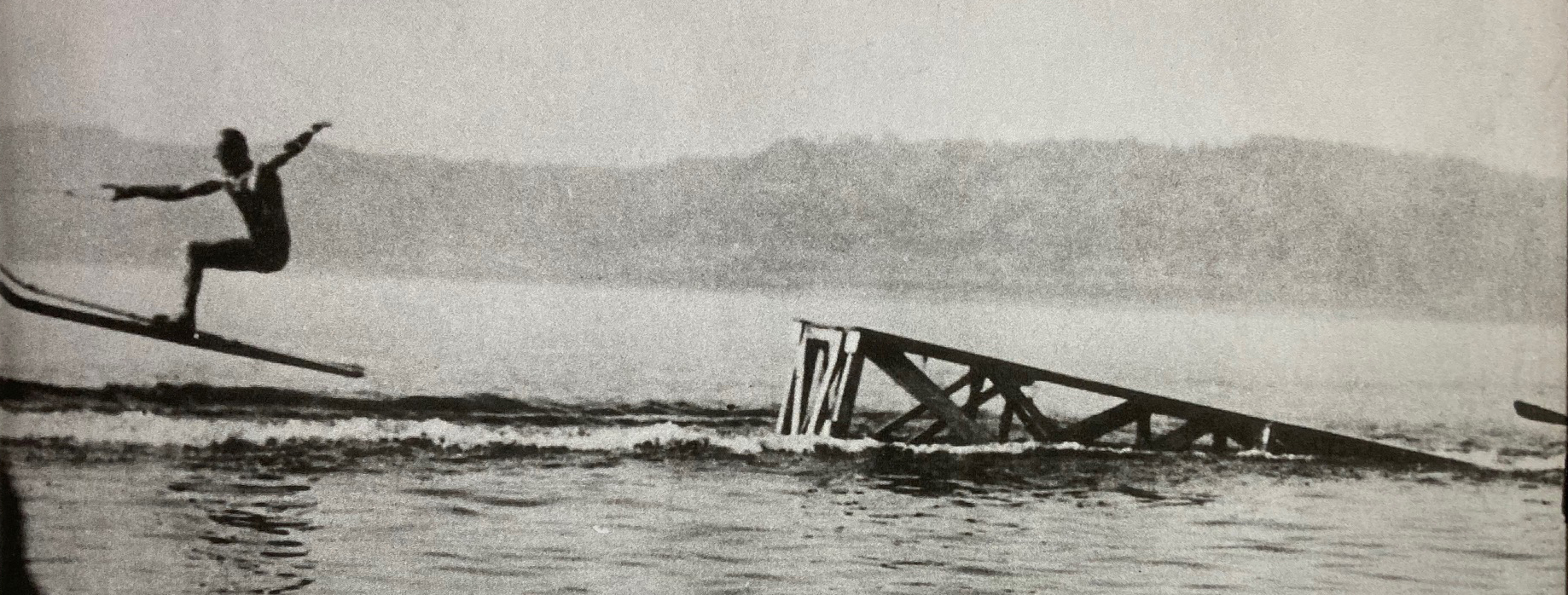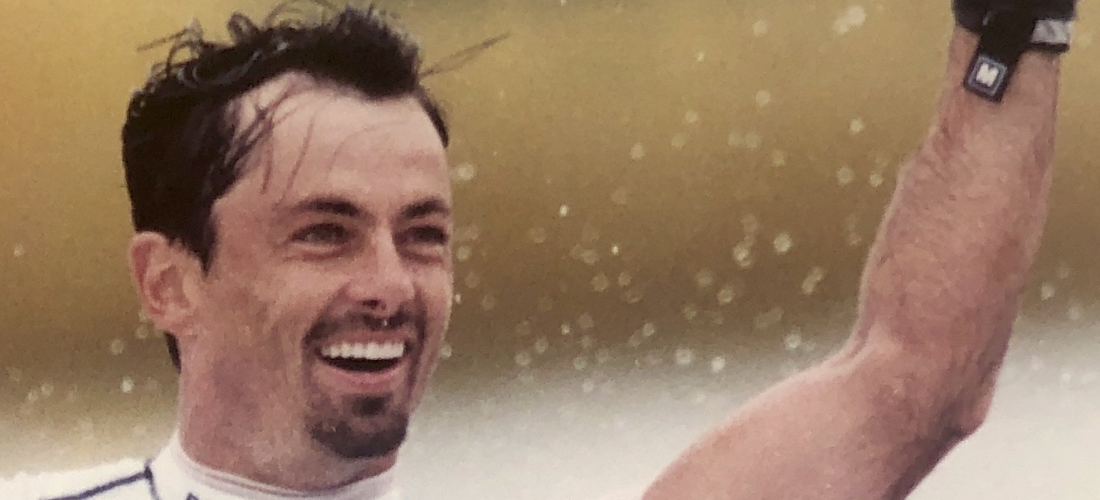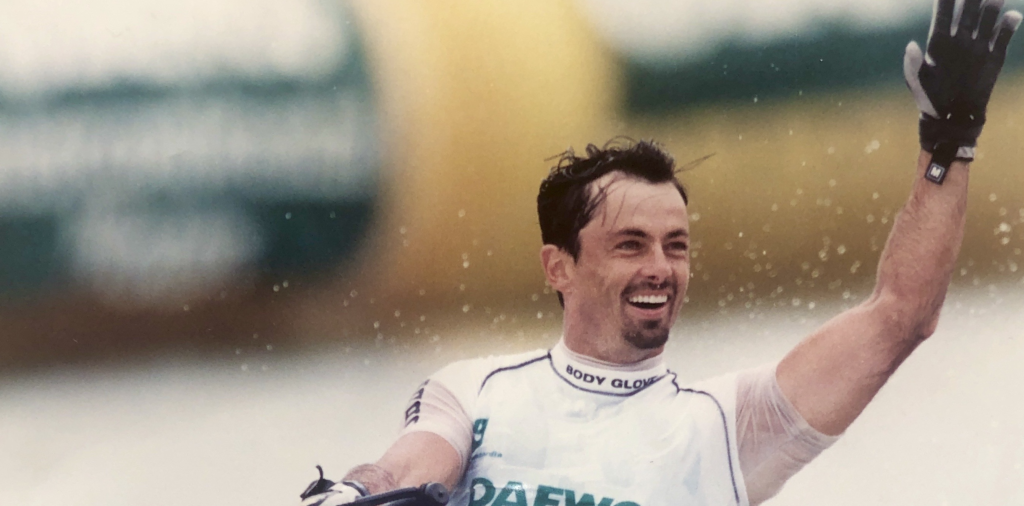World Championships: we countdown the 10 closest overall battles in the history of the tournament

The tightest overall competitions in the history of the Water Ski World Championships.
By Jack Burden
The World Championships have always delivered breathtaking competition, but perhaps no discipline captures the drama and intensity quite like overall. From dominant streaks and shocking upsets to clutch, career-defining performances, the race for overall gold has produced some of the most iconic moments in the sport’s history.
As we look ahead to the 2025 World Championships, anticipation is building—and so is nostalgia. We’re counting down the ten closest overall battles ever staged at the Worlds: contests where every buoy, every trick, and every inch mattered.
In this storied event, athletes compete across all three disciplines—slalom, tricks, and jump—with overall scores calculated based on how close they come to the best mark in each. The format rewards versatility and consistency, with the overall champion traditionally recognized as the best water skier in the world.
Join us as we relive some of the most thrilling overall showdowns in World Championship history.

Image: Yvon le Gall
10. Gothenburg, Sweden 1983
Contenders: Deena Brush (USA) vs. Ana Maria Carrasco (VEN)
The drama started before a single buoy was rounded. In a controversial decision, the U.S. Team left out the defending overall champion from 1981—Karin Roberge. Under the rules at the time, only officially selected team members could compete at the World Championships, and the U.S. used a Team Trials event two months prior to select its six-athlete roster. Roberge, having an off day in tricks, narrowly missed the cut.
Out of the preliminary rounds, two young challengers—21-year-old Deena Brush and 20-year-old Ana Maria Carrasco—emerged in a dead heat, with Brush holding a razor-thin 4-point advantage in overall.
In the slalom final, Brush edged ahead slightly, gaining another three-quarters of a buoy. The two would finish silver and bronze in the event. Then came tricks, where Carrasco—who had been trading the world record with the Soviet Union’s Natalia Rumjantseva over the past three years—delivered fireworks. In the final, she laid down a new world record of 7,970 points, putting over 2,000 points between herself and Brush. But in the combined-score format used for individual medals at the time, Carrasco still took silver behind Rumjantseva.
Carrasco’s performance vaulted her just ahead of Brush in the overall standings heading into jump—the weakest of Carrasco’s three events. She didn’t make the jump final and could only watch as Brush chased the title. The American, who would go on to become one of the greatest jumpers of all time, needed just two feet more than her prelim mark to claim gold. But it wasn’t to be. She missed the jump podium, and the title went to Carrasco.
Key Moment: Arguably, the U.S. Team Trials. On form, Karin Roberge was the best overall skier in the world at the time, and her scores from the previous World Championships would have comfortably secured the title.
Winning Margin: 28 points. Equivalent to two feet (70 centimeters) in jump.
- Ana Maria Carrasco (2,641 points)
- Deena Brush (2,613 points)
- Camille Duvall (2,577 points)

Duvall pays an emotional tribute to his late father.
9. London, England 1987
Contenders: Sammy Duvall (USA) vs. Mick Neville (AUS)
It remains one of the most iconic moments in World Championship history—and arguably the most clutch performance waterskiing has ever seen.
Heading into the 1987 Worlds at Thorpe Park, Sammy Duvall had already cemented his legacy with three consecutive world overall titles. He was also one of the sport’s first true professionals—a dominant jumper, a fixture of the Coors Light Pro Tour, and a household name in the U.S. And by ’87, his appetite for amateur competition was waning. This would be his final World Championship appearance.
His chief rival, though lesser known to many today, was a generational talent. Mick Neville, the unpretentious Aussie, had evolved from a world-class tricker into perhaps the most complete skier of his time. To this day, Neville remains the only man to win professional titles in all three events during the modern era. Think of him as a 1980s Joel Poland—funny accent, quiet swagger, and an allegiance to the crown.
Neville, still burning from a narrow defeat to Duvall two years earlier, came out swinging. He shocked pundits by claiming bronze in slalom, outskiing Pro Tour staples like Kris LaPoint and Carl Roberge, even edging Michael Kjellander in a runoff. Duvall, meanwhile, narrowly missed the slalom final—leaving the door open.
In tricks, Neville was unshakable, scoring over 9,000 points in both rounds to claim silver behind Patrice Martin. With two events down, the Australian held a commanding lead in overall.
Duvall, as expected, had the edge in jump. His opening-round 57.4-meter leap led the field—but it wasn’t enough to erase Neville’s advantage, and he sat in third overall heading into the final round, trailing both Neville and Roberge.
What followed was chaos. The men’s jump final became a frenetic game of musical chairs, reshuffling the leaderboard with every skier. First, a 20-year-old Kreg Llewellyn launched three meters farther than in the prelims to bump Duvall off the overall podium. Then Martin posted a huge personal best to leap into second. Neville followed with a nearly two-meter improvement, vaulting into the lead. When Roberge failed to respond, Duvall stood on the dock—last man out—sitting in fifth place.
More than 10,000 spectators lined the banks of Thorpe Park. Tension was thick enough to cut with a ski fin. Security was even required on the dock after another competitor’s belligerent father got into an altercation with Duvall’s sister Camille. The atmosphere was electric.
Duvall’s first jump? A massive 59.1 meters—the farthest ever at a World Championships. It earned him the jump gold, but still left him half a meter shy of Neville in overall. Then came jump number two. And then, history.
On his final jump, everything clicked. You could hear it in the snap of his skis, see it in the compression before the ramp, and feel it in the silence that hung as he took flight. When he landed—200 feet downcourse—everyone knew. Sammy had done it. With one final, flawless leap, he ripped the overall title from Neville’s grasp and closed the curtain on an undefeated career at the World Championships.
Neville, once again the runner-up, walked away with three medals from London. His eight total podiums remain the most of any man never to win gold.
But this was Duvall’s swan song. And he exited the World Championship stage exactly as he had entered it—undefeated, unmatched, and unshakable when it mattered most.
Key Moment: Sometimes pictures speak louder than words.
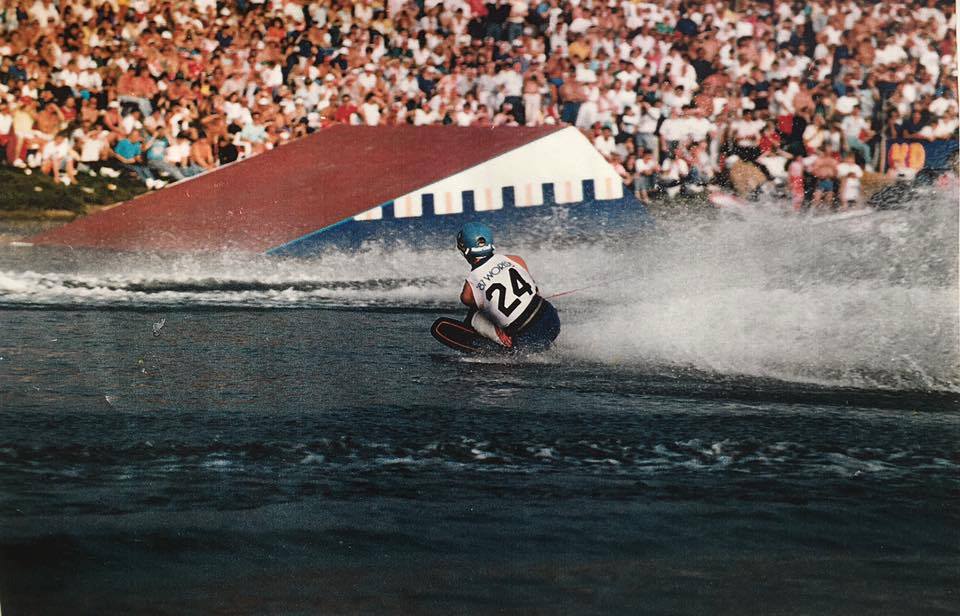
Winning Margin: 24 points. Equivalent to two buoys in slalom.
- Sammy Duvall (2,724 points)
- Mick Neville (2,699 points)
- Carl Roberge (2,659 points)
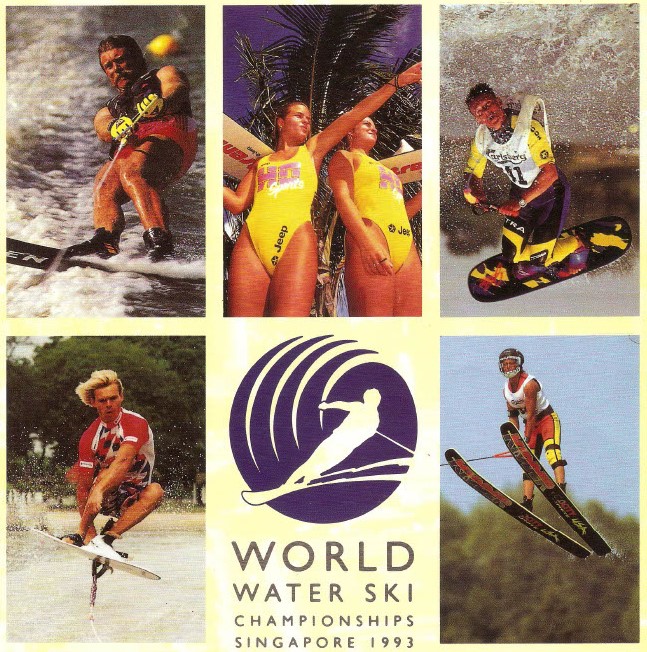
Image: IWSF
8. Singapore 1993
Contenders: Kim De Macedo (CAN) vs. Natalia Rumjantseva (RUS)
The 1993 World Championships—the first ever held in Asia—are best remembered for the dramatic team battle between the U.S. and Canada, ultimately decided by a razor-thin margin. But quietly, on the brackish, tidal waters of Singapore, another race was unfolding: a down-to-the-wire overall showdown between a Russian veteran and an unheralded Canadian upstart.
Natalia Rumjantseva, already a three-time world trick champion, dominated the preliminary rounds and looked poised to claim her first overall title. With Karen Bowkett Neville and Deena Brush Mapple both retired, Rumjantseva’s closest challenge was expected to come from Canada’s Judy McClintock Messer—a perennial podium finisher in overall.
In the trick final, Messer closed the gap slightly as top-seeded Rumjantseva slipped to second behind Britt Larsen. But it wasn’t enough to seriously threaten the lead. Then came the jump final—where everything changed.
First off the dock was Olga Pavlova of Belarus, a complete unknown to western audiences. She stunned the field by leapfrogging Messer and moving into second overall. Messer responded with a clutch three-meter improvement of her own, reclaiming second—but still sat a meter and a half shy of Rumjantseva’s mark.
Enter Kim De Macedo.
Just 21 years old and added to Team Canada primarily for depth, the public lake skier from Vancouver Island delivered the jump of her life: 41.9 meters, the longest of the day. The performance vaulted her from a distant fourth into striking range of the title. Rumjantseva, skiing next, watched as the young Canadian came within an infinitesimal 0.7 overall points of overtaking her. As the computers whirred, the Russian veteran responded with a half-meter improvement—to put any doubts to bed.
Rumjantseva took the title. De Macedo settled for silver. But in a performance few saw coming, the Canadian walk-on very nearly rewrote the story.
Key Moment: De Macedo’s breakout jump, which earned her an unexpected gold in the event and nearly the overall title. It also proved decisive in Canada’s historic win in the team competition.
Winning Margin: 24 points. Equivalent to 60 centimeters, or two feet, in jump.
- Natalia Rumjantseva (2,678 points)
- Kim De Macedo (2,654 points)
- Judy McClintock Messer (2,602 points)

The Battle of Bogotá
7. Bogotá, Colombia 1973
Contenders: Sylvia Maurial (FRA) vs. Lisa St. John (USA)
In the thin mountain air of Bogotá, the 13th World Water Ski Championships delivered one of the sport’s purest overall duels. Lisa St. John, the fresh-faced high school grad from Redding, California, faced off against France’s Sylvie Maurial, a seasoned veteran fresh off an Olympic gold medal in jump at the 1972 Games in Munich. The two women were virtually inseparable across all three events—trading leads, medals, and momentum in one of the closest overall contests in tournament history.
St. John struck first, edging Maurial by a single buoy in the slalom preliminary. Maurial responded in the final, running the only 14.25m (28-off) pass of the tournament to claim slalom gold. In tricks, St. John led Maurial by just 80 points in the prelim and extended that margin slightly to 130 in the final. On the jump ramp, Maurial struck back again, out-leaping St. John by just half a meter to take silver behind the USA’s Liz Allan Shetter.
When the dust settled and the points were tallied, St. John came out a hair ahead.
It was a heartbreaking near-miss for Maurial, and a career-defining victory for St. John. But tragically, the triumph in Bogotá would be her last major one. Ten days later, she suffered a back injury at the California Cup that effectively ended her run at the top. Her career had been a meteoric rise—from child prodigy to world champion—all before her 19th birthday.
Key Moment: The slalom preliminary, where St. John edged Maurial by a single buoy. Under the scoring rules of the time, only preliminary scores counted toward the overall race. Maurial’s final-round surge earned her slalom gold, but it came a round too late.
Winning Margin: 17 points. Equivalent to a single buoy in slalom.
- Lisa St. John (2,534 points)
- Sylvia Maurial (2,516 points)
- Barbara Cleveland (2,149 points)

Image: Jaret Llewellyn
6. Calgary, Canada 2009
Contenders: Javier Julio (ARG) vs. Jaret Llewellyn (CAN) vs. Adam Sedlmajer (CZE)
In one of the most open overall fields in World Championships history, the 2009 edition in Calgary felt like a roll of the dice. At least five men had a legitimate shot at the title, and by the end of the prelims, three remained—one a grizzled legend, one a fresh-faced prodigy, and a come-from-behind victory for the ages.
Jimmy Siemers stormed out early with a strong trick score, chased closely by Belarusian teammates Herman Beliakou and Oleg Deviatovski. But the slalom event shuffled the deck. Both Adam Sedlmajer and Javier Julio ran midway through 10.75m (39.5 off), putting themselves a full pass ahead of most of the field and narrowly missing the slalom finals in a stacked eight-way runoff for the last two spots.
Then came jump. And with it, chaos.
Jaret Llewellyn, competing in front of a hometown crowd, launched the farthest leap of the prelims to vault himself into serious contention. Siemers and Beliakou misfired, effectively ending their campaigns. When the dust settled, Sedlmajer—a then-unknown 22-year-old from the Czech Republic—held a narrow overall lead over the 38-year-old Llewellyn heading into the finals.
Enter Javier Julio, the emotive Argentinian, skiing with nothing to lose.
First off the dock in tricks—in a final he had only just scraped into—Julio threw down more than 1,000 points over his prelim total, enough to move within striking distance of Sedlmajer and Llewellyn and put himself firmly in the conversation. Then in jump, again as one of the lowest seeds, he found two extra meters on his earlier score and took the overall lead outright.
From there, it was a waiting game. Sedlmajer couldn’t improve. And then came Llewellyn, last off the dock. He needed 70.3 meters to clinch overall gold. Coincidentally, that was the exact distance needed to steal the jump title from Freddy Krueger as well. The crowd held its breath.
But it wasn’t to be. Llewellyn’s best mark was 68.5 meters. A remarkable performance, but not quite enough. Julio, after three consecutive podium finishes earlier in the decade, had finally secured the one title that had always eluded him—claiming Argentina’s first world title.
In a curious twist, the 2009 World Championships were one of only a handful between 2007 and 2013 that used an overall scoring formula widely criticized for overweighting slalom. Under the system used for the previous five decades—or the one in place today—Llewellyn would have won comfortably. Instead, it was Julio who claimed gold: a deserving champion on the day, but one whose victory came in part thanks to a scoring system that has since been scrapped.
Key Moment: The men’s jump prelims were carnage—an outbreak of crashes ruled multiple skiers out of the finals. Had they advanced, Julio’s 200-foot leap likely wouldn’t have made the cut, leaving him out of the final—and out of the race.
Winning Margin: 15 points. Equivalent to a toe slide.
- Javier Julio (2,773 points)
- Adam Sedlmajer (2,758 points)
- Jaret Llewellyn (2,739 points)

Image: WATERSKI Magazine
5. Toulouse, France 1985
Contenders: Sammy Duvall (USA) vs. Mick Neville (AUS) vs. Carl Roberge (USA)
The 1985 World Championships delivered a classic—a three-way standoff in men’s overall that mirrored the broader team competition, where Australia pushed the undefeated Americans closer than ever to surrendering their grip on the world title. And at the center of it all were three men, each with a distinct style and background: The brash confidence of Duvall, the imposing presence of Roberge, and the suave precision of Neville.
Duvall and Roberge were mainstays on the Coors Light Pro Tour, sharpening their slalom and jump in the crucible of professional competition. Neville, by contrast, was a throwback—a tricker first and foremost, still to this day the most decorated trick skier in Moomba Masters history. A relative unknown to international audiences, he arrived in Toulouse determined to prove he could match the pros at their own game.
Roberge struck first, claiming bronze in slalom behind Bob LaPoint and Andy Mapple, finishing two buoys clear of both Duvall and Neville. But Neville countered in tricks, scoring nearly 9,000 points to take bronze behind Patrice Martin and Cory Pickos, putting daylight between himself and the two Americans.
Heading into the jump final, Duvall had the edge. His prelim jump was over 10 feet farther than either rival—and he held a commanding lead in the overall. But the final was anything but predictable.
Neville, the bottom seed, stunned the crowd with a 54-meter leap—3.5 meters farther than his prelim score—to match Duvall’s earlier mark and snatch the lead. Then Roberge responded with a jump 10 feet farther than his qualifying mark, leapfrogging Duvall into second.
Suddenly, the two-time defending champion was sitting in third. His first two jumps didn’t move the needle. It came down to his final attempt. Duvall needed something special—and delivered. On his third and final jump, he unleashed the patented Duvall kick and soared past 184 feet, just enough to reclaim the lead and secure an unprecedented third consecutive World overall title.
Key Moment: Though overshadowed in the jump final by the aforementioned trio, a 21-year-old former trick specialist from France was in the silver medal position when Neville left the dock—perhaps a quiet foreshadowing of the decade of dominance to come.
Winning Margin: 11 points. Equivalent to one foot, or 30 centimeters, in jump.
- Sammy Duvall (2,736 points)
- Mick Neville (2,726 points)
- Carl Roberge (2,714 points)

Image: @gregoiredesfond
4. Lake County, United States 2021
Contenders: Aliaksandra Danisheuskaya (BLR) vs. Hanna Straltsova (BLR)
For a country that has quietly produced more elite overall skiers than any other in the past two decades, it was only fitting that the most dramatic battle of recent times came down to two Belarusians: Aliaksandra Danisheuskaya and Hanna Straltsova.
Danisheuskaya struck first, running deep into 11.25m (38 off) in slalom to take the early lead. But Straltsova punched back in jump, claiming a 2.6-meter (9-foot) advantage to finish the prelims with a commanding overall lead. When the dust settled on the elimination round, she held a 100-point lead over Canada’s Paige Rini in second, while Danisheuskaya sat nearly 200 points off the pace in third.
Then came tricks—and with it, a seismic shift.
Danisheuskaya had only just squeaked into the final, grabbing the last qualifying spot by just 20 points. But when the opportunity presented itself, she seized it. Upping her prelim score by nearly 1,000 points, she vaulted into the overall lead, narrowly ahead of Straltsova.
When Rini, Straltsova, and pre-event favorite Giannina Bonnemann all failed to improve in the final, it came down to jump.
Danisheuskaya, skiing from the middle of the pack, tacked on another 1.4 meters (5 feet) to her previous mark, extending her narrow lead. That left Straltsova—silver medalist in both overall and jump two years earlier—with one more chance. She needed 56.2 meters to claim gold.
She came heartbreakingly close. Her best jump, 55.5 meters (182 feet), was good enough for silver—for the fourth time across the 2019 and 2021 World Championships—but not quite enough to catch her teammate.
Danisheuskaya, who had not stood on the podium in any of the individual events, walked away with gold in the one that mattered most.
It would mark the final time either woman would represent Belarus. Four months later, the country was suspended from IWWF competition following its involvement in the invasion of Ukraine. Both Danisheuskaya and Straltsova would continue their careers under the U.S. flag—claiming medals, and in Straltsova’s case, dual golds—at the next World Championships.
Key Moment: Giannina Bonnemann, the world’s top-ranked overall skier entering the tournament, fell early on toes in both rounds of tricks. Had she scored anywhere near her best, she would have cruised to the title.
Winning Margin: 8 points. Only half a buoy in slalom.
- Aliaksandra Danisheuskaya (2,574 points)
- Hanna Straltsova (2,565 points)
- Paige Rini (2,412 points)

Image: WATERSKI Magazine
3. West Palm Beach, United States 1989
Contenders: Patrice Martin (FRA) vs. Carl Roberge (USA)
In 1989, the World Championships returned to U.S. soil for the first time in 28 years, landing at Okeeheelee Park in West Palm Beach for what turned out to be a blockbuster event. The sport was arguably at its peak in American popularity—major sponsors like Pepsi and Coors Light were on board, and more than 15,000 spectators lined the banks for the final day of competition. The headline drama? A gripping men’s overall showdown between established star Carl Roberge and France’s relentless technician, Patrice Martin.
Roberge, 25, had long been the heir apparent—Sammy Duvall’s understudy, a three-time overall bronze medalist, and now the anchor of Team USA. He entered the event ranked number one in the world, with pro tour titles and a season championship already under his belt. Martin, meanwhile, had three world trick titles to his name and was steadily evolving into a true three-event threat. After flirting with the podium in both 1985 and 1987, the Frenchman arrived in Florida looking for more than tricks gold—he wanted the overall.
Roberge opened strong in slalom, his best event, matching Andy Mapple’s championship record of 3 @ 10.75m (39.5 off) to earn silver and establish a full-pass advantage over Martin. But Martin fired back in tricks with a tournament-record 10,780 in the prelims, more than offsetting Roberge’s edge. After the jump prelims, Roberge clung to a razor-thin lead overall—setting the stage for a winner-take-all final.
The jump event, Martin’s weakest, saw him go first. Le Petit Prince barely improved on his prelim mark, landing at 53.5 meters—just enough to inch into the lead and apply pressure. Roberge, one of the top jumpers in the world, needed just 56.7 meters (186 feet)—well short of his personal best and comfortably within his range.
But he never found it.
Three eerily similar jumps, each a little back on the ramp, left him stranded six points short. The crowd watched in stunned silence as the scoreboard confirmed the result: Martin, by the slimmest of margins.
Four years earlier in Toulouse, Martin had declared his intention to win the overall title. Now, on U.S. turf, he finally did—kicking off one of the greatest winning streaks in the history of the sport.
Key Moment: Trick judging at these championships was widely questioned—Cory Pickos called it “nearly incompetent,” and even medalists were surprised by their high scores. Would a stricter panel have swung the overall result the other way?
Winning Margin: 6 points. Less then a foot, a quarter meter, in jump.
- Patrice Martin (2,705 points)
- Carl Roberge (2,699 points)
- Bruce Neville (2,598 points)

Image: Historical Society of Long Beach
2. Long Beach, United States 1961
Contenders: Jean-Marie Muller (FRA) vs. Bruno Zaccardi (ITA)
The VII World Water Ski Championship at Long Beach was a landmark event for the sport—both in spectacle and competition. It featured the most extensive television coverage water skiing had ever received, broadcast live to homes across the U.S., and drew thousands of spectators. The mile-and-a-quarter Marine Stadium, built for the 1932 Olympics, once again hosted a major international competition. Banners from 19 nations rippled in the breeze as ski parades, chorus lines, and a battery of television cameras surrounded an event marked by style, tension, and a shifting global balance of power.
Tournament skiing in 1961 bore little resemblance to today’s format. Men ran the slalom course at 60 kph (37.3 mph), ramp tricks were still common, and jumpers were judged not just on distance, but on style. In this hybrid of sport and performance, it was 18-year-old Italian Bruno Zaccardi who emerged victorious in the overall standings—though only just.
Zaccardi’s path to the title was a study in consistency. A middling slalom performance saw him qualify for the final but finish only seventh. But he bounced back in the trick and jump events, collecting bronze medals in both. Muller, the French standout, struck gold in tricks—France’s signature event even then—and matched Zaccardi closely in slalom, finishing just one buoy short. But the Italian’s advantage on the ramp proved decisive.
American hopes rested on defending champion Chuck Stearns, but an ankle injury sustained at the Nationals limited his impact. Though U.S. athletes won three of the eight gold medals and claimed the team title, Zaccardi’s triumph marked a turning point—the rise of Europe on the world stage. Coming off three consecutive European overall titles, his win in Long Beach confirmed his global credentials and hinted at a more competitive, international era ahead.
Key Moment: With a fierce cut and a forward-leaning air form, Zaccardi launched a personal best 42.6-meter (140-foot) leap that brought the crowd to its feet and sent his countrymen into hysterics before the distance was even announced. Though not the longest jump of the event—American Larry Penacho flew 45.7 meters—it was enough to secure Zaccardi’s historic overall win.
Winning Margin: 4 points—equivalent to a two-ski side-slide, something you would actually have seen at the ’61 Worlds.
- Bruno Zaccardi (2,667 points)
- Jean-Marie Muller (2,663 points)
- A.J. Orsi, Jr. (2,547 points)

The tightest overall battle in World Championships history
1. Villach, Austria 1991
Contenders: Jaret Llewellyn (CAN) vs. Kreg Llewellyn (CAN) vs. Patrice Martin (FRA)
Patrice Martin entered the 1991 World Championships as the reigning overall champion, fresh off a dramatic victory over Carl Roberge two years earlier. Now 27, the French trick prodigy turned three-event star was at the peak of his powers. But with the 1980s titans fading, a new generation was knocking—including two brothers from rural Alberta, of all places.
The prelims set the tone. Martin emerged with a narrow lead, just 30 points ahead of 21-year-old Jaret Llewellyn, who had thrown himself into contention with a massive jump score. In the slalom finals, Martin—qualifying as the bottom seed—picked up two extra buoys to widen the gap. Then came tricks, where he claimed yet another world title—his fourth in the event—and solidified his lead.
But the biggest mover was Australia’s Mick Neville. The last of the old guard in overall, Neville delivered a huge final-round score to climb within striking distance of the title. Martin, having failed to make the jump final, could only sit and watch.
The numbers were clear. Martin led by 60 points over Jaret, and 90 over Neville. But it was the elder Llewellyn—Kreg—who turned the event on its head.
Skiing third off the dock, Kreg was known primarily for his tricks, where he’d picked up bronze earlier in the tournament—jumping was the weakest of his three events. But on this day, he uncorked the performance of his life, adding nearly four meters to his prelim mark and launching himself from fourth place to the cusp of an improbable world title. The result was so tight that when the spray settled, no one was sure who had won.
When the computers finished their work, it was Martin clinging to the lead by 0.2 overall points.
Neville, needing just two more meters, couldn’t find it. And Jaret, requiring the first 60-meter jump of his career, came up short. Martin, unshakable once again, had done just enough to defend his title. It would go down as the closest overall finish in the history of the World Championships.
Key Moment: Kreg’s massive leap—it earned him the jump bronze medal, and along with compatriot Jim Clunie’s finals performance, helped Team Canada secure its historic first-ever team victory. But it was 10 centimeters shy of the mark he needed for overall gold.
Winning Margin: 0.2 points. Equivalent to, well, nothing. Just enough for heartbreak.
- Patrice Martin (2,655.5 points)
- Kreg Llewellyn (2,655.3 points)
- Jaret Llewellyn (2,603 points)



